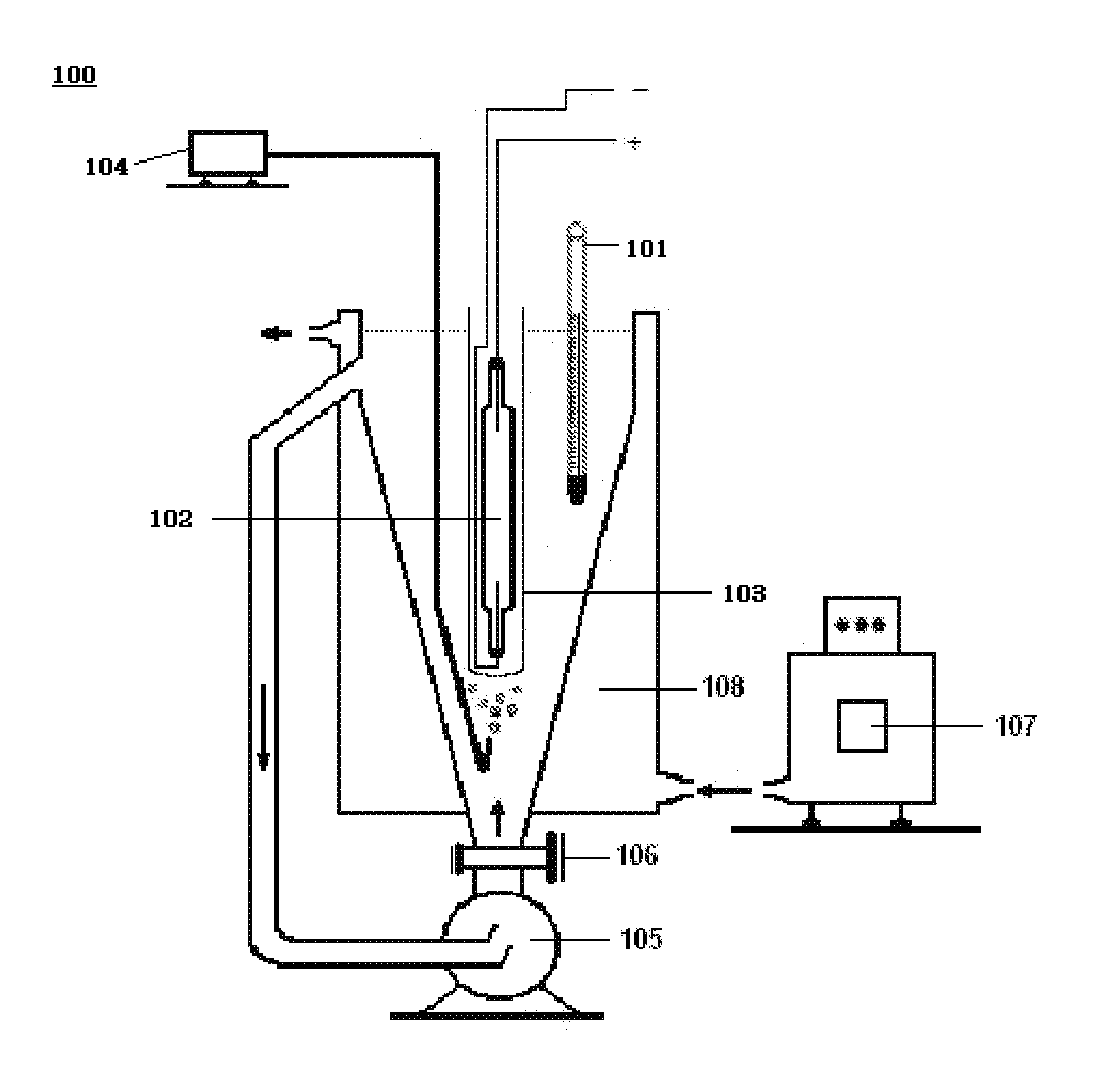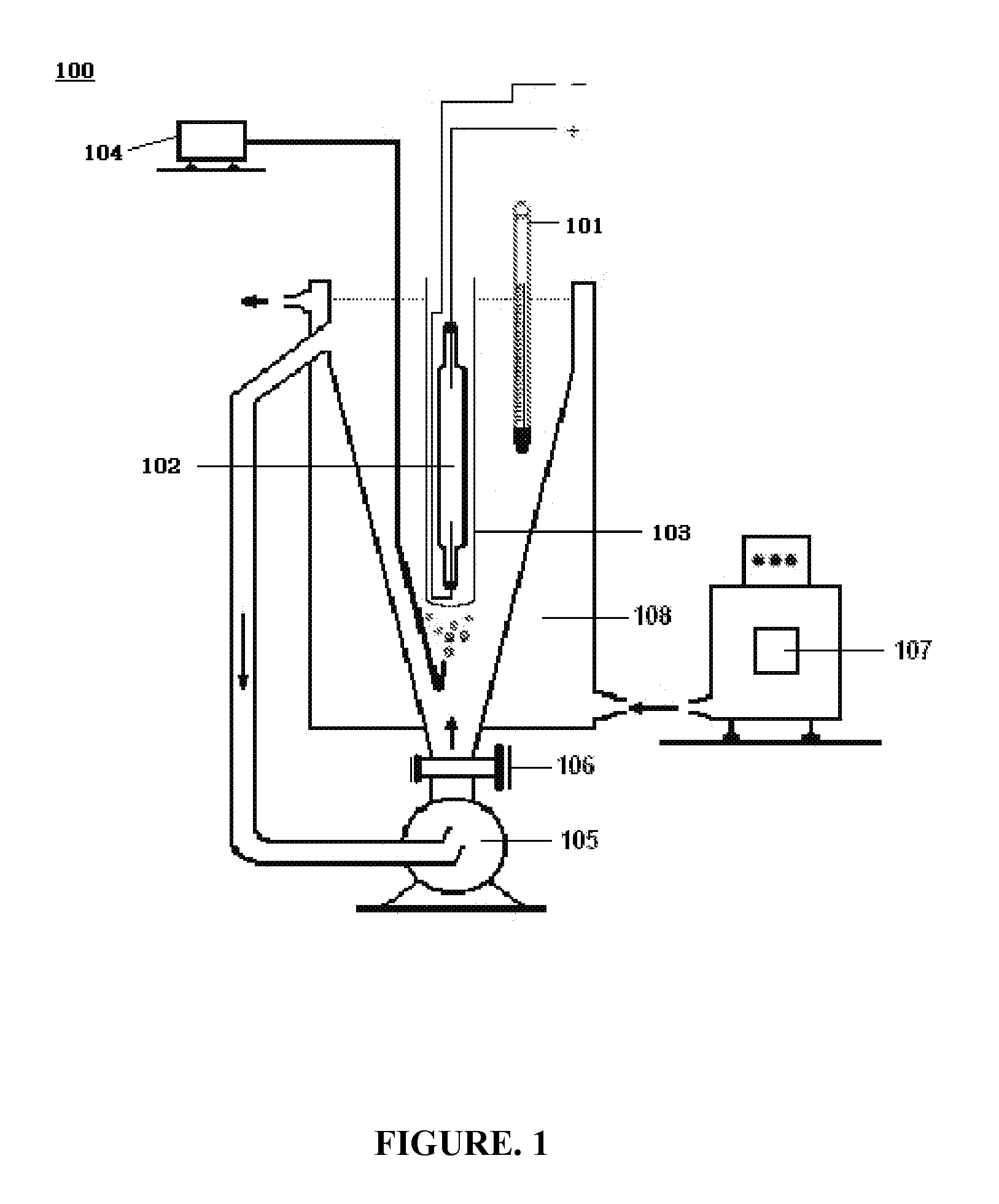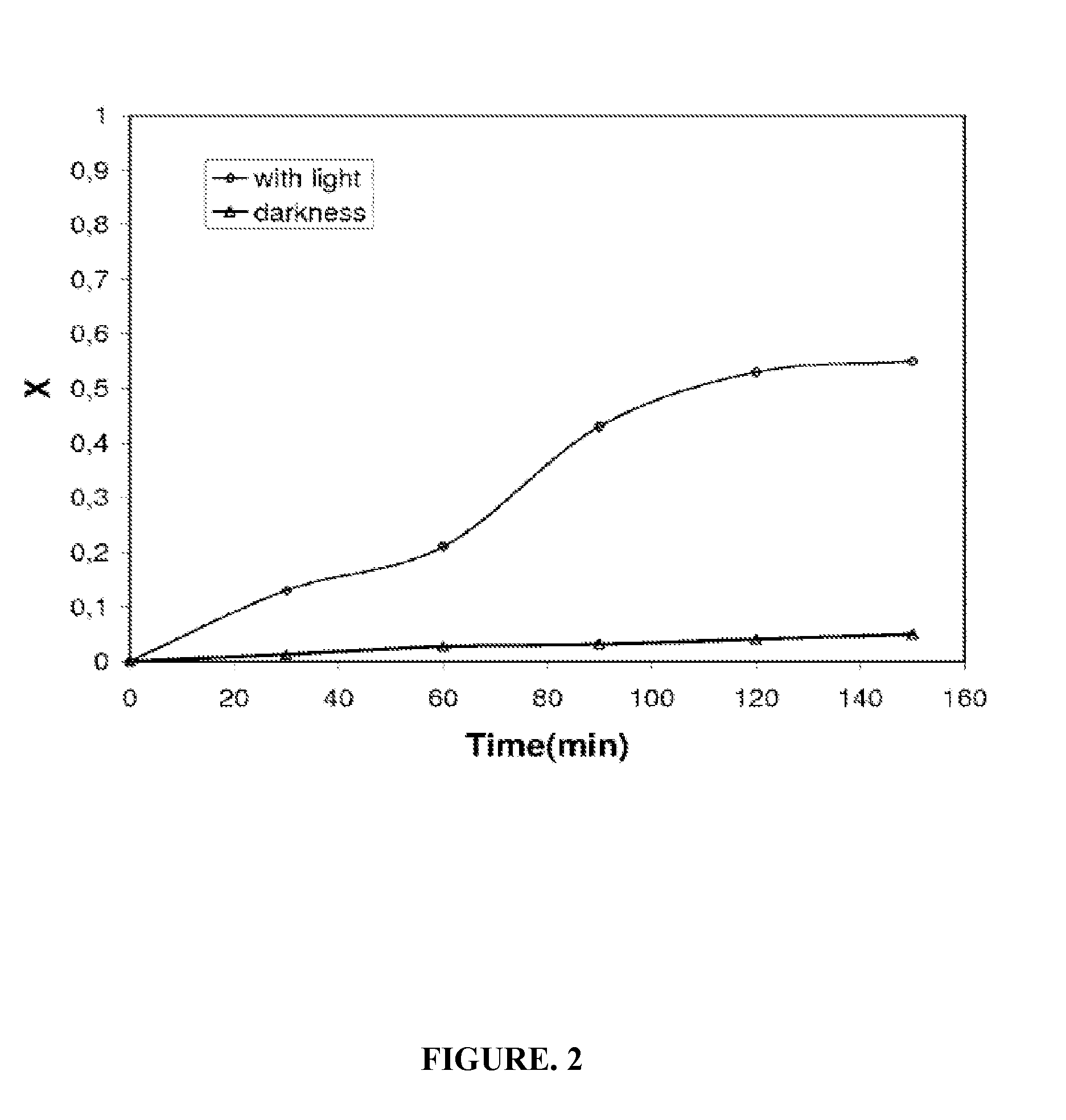Treatment of the refinery wastewater by NANO particles of tio2
a technology of nano particles and refinery wastewater, which is applied in the direction of water treatment compounds, water/sludge/sewage treatment, moving filter elements, etc., can solve the problems of increasing the pollution level of the surrounding environment, affecting the quality of the wastewater treatment process, so as to achieve high efficiency and improve the degradation of pollutants
- Summary
- Abstract
- Description
- Claims
- Application Information
AI Technical Summary
Benefits of technology
Problems solved by technology
Method used
Image
Examples
example 1
Effect of UV Light
[0039]The photo-degradation effect of UV light on wastewater sample is understood by comparing the effect in the presence and the absence of UV light. The effective role of UV light in the degradation of the wastewater pollutants is estimated by conversion factor (X), which is negligible in the absence of light, due to lack of production of active hydroxyl radical. When, the same sample was irradiated with UV light, the conversion factor (X) for the same irradiation time increases to 0.55, due to the generation of very strong oxidizers, the active hydroxyl radicals. FIG. 2 shows that the conversion factor in the reaction mixture in dark situation is ignorable when compared to that in the UV light radiation. The irradiation wavelength is within 280 nm-550 nm and maximum irradiation intensity being 365 nm.
example 2
Effect of the Presence of the Nano Photocatalyst in the Presence of UV Light and in the Absence of Light
[0040]The effect of nano photocatalyst (TiO2) in the degradation of the organic and oil pollutants in refinery wastewater is tested. The wastewater sample in the absence of a nano photocatalyst and in the presence of light and air current indicates that the conversion factor (X) is about 45% lower compared to the presence of nano photocatalyst (TiO2) in the wastewater treatment mixture sample and for a light irradiation of about 150 min. FIG. 3 shows the conversion factor (X).
[0041]With the purpose of optimizing the concentration of nano TiO2 as the photocatalyst of photooxidation reaction of the pollutants in the refinery wastewater, a reaction media with a concentration of photocatalyst ranging from 10 to 200 ppm is analyzed. The reason for selecting low-level concentrations is purely economical. The results indicate that the conversion efficiency increased considerably with inc...
example 3
Degradation of Pollutants of Refinery Wastewater under Optimal pH Value
[0045]The pH of the solution is regulated on determinate quantities in every test. Range of the pH value tested is 2 to 10. By lowering pH value, the conversion of pollutants gradually increased and this conversion ambit reaches its maximum extent at pH value 3. The conversion of pollutants is considerably decreased on further lowering of pH. The reason of this behavior relates to the surface charge of TiO2 particles. Therefore, due to the aforementioned reasons, the optimal pH for treating refinery wastewater through UV / TiO2 photocatalysis is pH 3. FIG. 5 shows changes of conversion (X) of pollutants in terms of time and different range of pH value.
PUM
| Property | Measurement | Unit |
|---|---|---|
| size | aaaaa | aaaaa |
| temperature | aaaaa | aaaaa |
| time | aaaaa | aaaaa |
Abstract
Description
Claims
Application Information
 Login to View More
Login to View More - R&D
- Intellectual Property
- Life Sciences
- Materials
- Tech Scout
- Unparalleled Data Quality
- Higher Quality Content
- 60% Fewer Hallucinations
Browse by: Latest US Patents, China's latest patents, Technical Efficacy Thesaurus, Application Domain, Technology Topic, Popular Technical Reports.
© 2025 PatSnap. All rights reserved.Legal|Privacy policy|Modern Slavery Act Transparency Statement|Sitemap|About US| Contact US: help@patsnap.com



